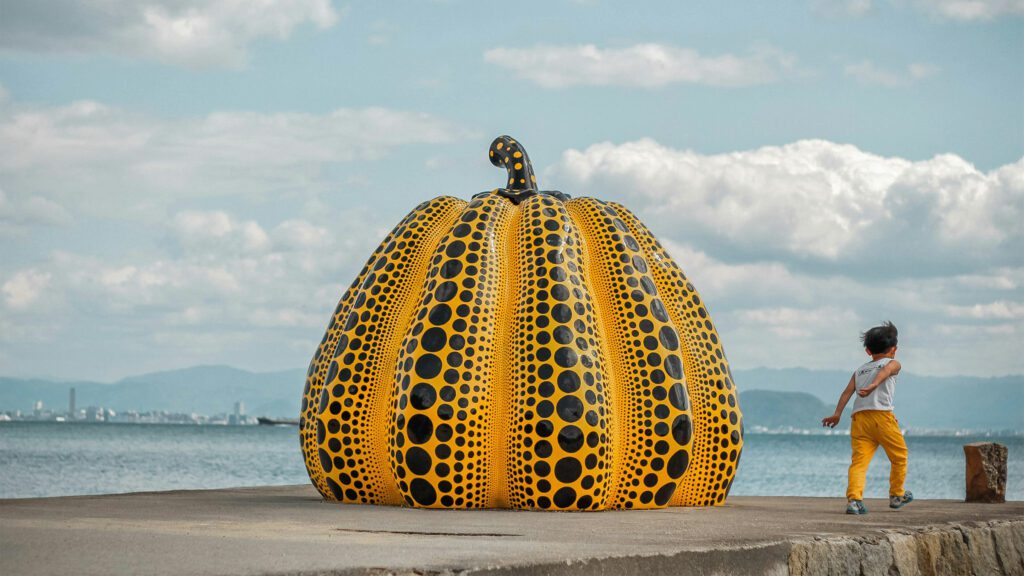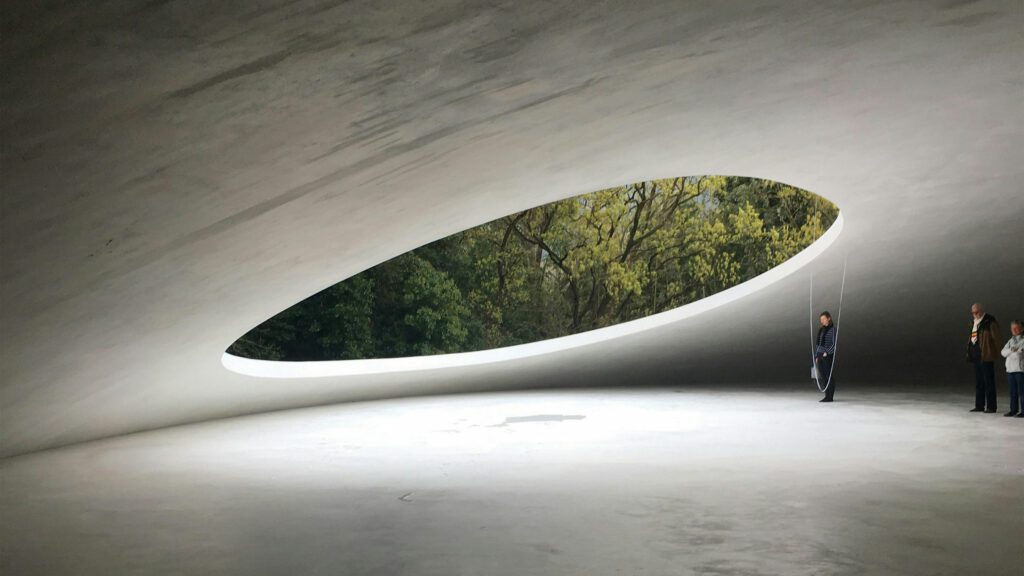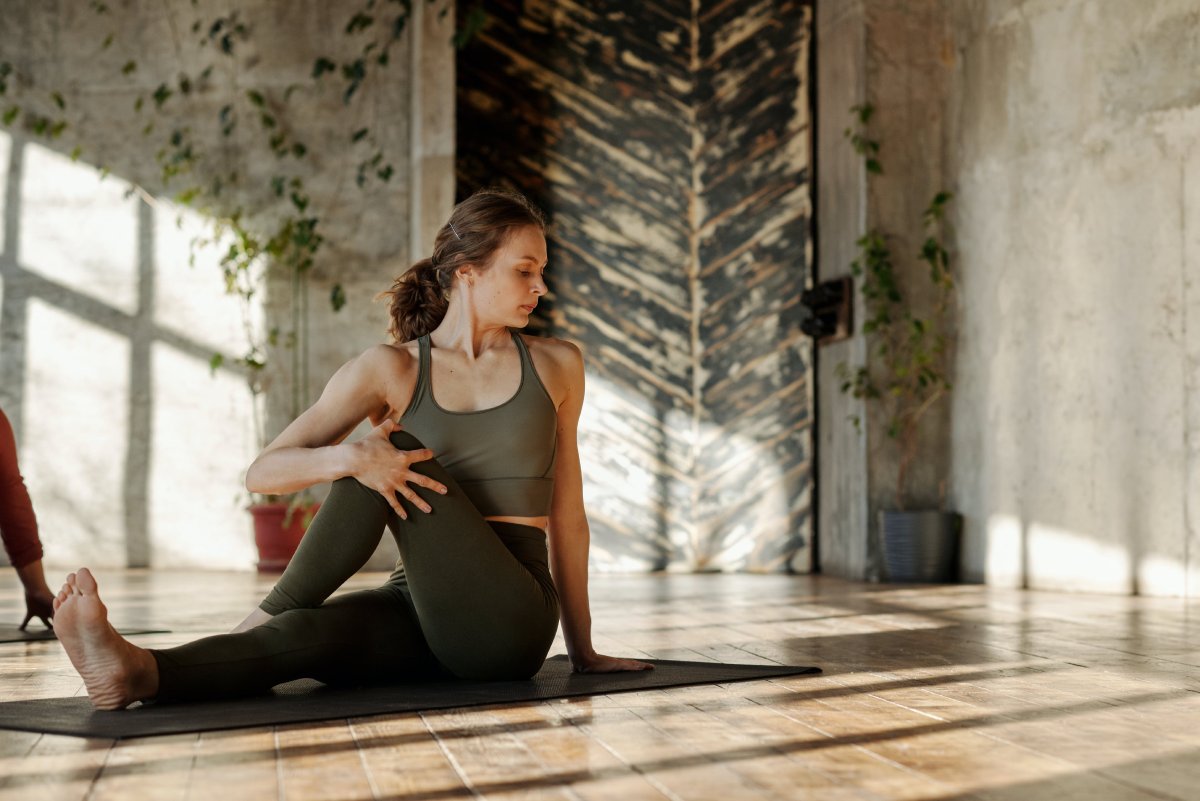The World Is Your Zendo
On remote islands, Pico Iyer discovers that this moment, now, is the gift-wrapped present we can’t afford to overlook. The post The World Is Your Zendo appeared first on Lion’s Roar.

I walk along the quiet, empty road above the Inland Sea in Japan and feel unexpectedly cleansed and clarified. Everything around me seems closer to me than I am. The water lapping against the sand below. The bush-warbler, often mistaken for a nightingale, practicing—and practicing—her song. That freighter gliding across the flat blue plate of the water. In the distance, the bridge known as the Seto Ohashi is as misty as a pen-and-ink drawing. But right in front of me, the small stone Jizo is so alive it seems to breathe.
Around the next turn I come upon a couple, dressed in black, standing above the sea. Are they fellow travelers or an installation? It hardly matters. I walked past such a couple three hours ago, in the other direction, and registered almost nothing. But after a morning in the Chichu Museum, my eyes are so powerfully awakened, my senses brought to such a pitch, that nothing seems unworthy of the attention I pay to art.
“In truth the soul’s joy and liberation lie on every side of us, if only we can come to our senses.”
That museum, built underground so that it hardly shows above the grass, contains only three pieces at its heart. A James Turrell Skyspace in which I sit on a pew in a large empty white room and look up at the sky through a square in the ceiling. A pair of black crows bisects the blue. The sky turns white in the morning sun. Clouds scud across the space like lilies floating on a body of water.
Then I step around the corner, slip off my shoes, and enter another large white antechamber, entirely empty save for a bench. Gathering myself there, as before a chapel, I walk into a room filled with five Monet portraits of water lilies, half-seen in natural light. The artist’s concern, I realize, isn’t with the water or the lilies, but with the light that falls upon them. He’s essentially Turrell again, but working on a canvas.
Then I head out and wander down a long corridor—a windowless concrete Tadao Ando corridor that draws all my attention to the light at the end of the tunnel—and step into a vast hall in which Walter de Maria constructed a huge globe under a rectangular skylight. Every time I walk toward it or around it, the slab of light reflected inside the globe shifts and suggests something different. His work is deepening the Turrell as Turrell is opening out the Monet; all are dissolving into a whole far greater than their parts.
 Naoshima is peppered with unique installations by contemporary artists, including this pumpkin sculpture by Yayoi Kusama. Photo by Yue-Ting Lin
Naoshima is peppered with unique installations by contemporary artists, including this pumpkin sculpture by Yayoi Kusama. Photo by Yue-Ting Lin“Emptiness,” as Thich Nhat Hanh said, “means to be full of everything but empty of a separate existence.” I’ve never felt that truth so deeply as in Japan, where so many rooms are empty and where separate existences are hard to contemplate. But the miracle of this morning is that such classical, traditional wisdom finds its truest expression in a cutting-edge, twenty-first-century network of Western works of art. In each near-empty space, you bring your whole self to the objects present and lose that self within them. The result is a you that feels as vast and wonderfully various as the blue sky all around.
When I left the rush and clatter of Midtown Manhattan for Japan thirty-seven years ago, I was sure that clarity and peace—truth itself—lay inside a temple. I was too young to look beyond binaries or to see that all distinctions between sacred and profane lie only in the mind. I needed to learn that confusion lives as easily inside a meditation hall as kindness and calm can reside in the chattering world. What I saw in the temple was mostly its aesthetic surfaces; what I failed to see in museums—or works of art—was a soul so deep I might as well call it light.
In truth the soul’s joy and liberation lie on every side of us, if only we can come to our senses. I can let go of my precious sense of self—my plans, my agitation, my compulsive arguments—as soon as I listen to Philip Glass or Sigur Rós. The films of Terrence Malick release me into a wider light—the magic hour—as surely as Wim Wenders’s Perfect Days offers me the fruits of meditation. Such invitations are everywhere I look, though when I came to Japan it was to a culture that seemed quieter, more inward-looking, and less caught up in the illusions of an independent existence than any I had previously encountered.
So now I return as often as I can to these long-forgotten islands in a spirit of borrowed pilgrimage. My neighbors here know less about the Buddha’s teachings and the sutras than do my neighbors in California, but they seem to live on intimate terms with impermanence, with the notion of a larger whole, and with the fact that reality can’t be wished away. The bells that toll along the eastern hills of Kyoto remind us that none of us has all the time in the world; this moment now is the gift-wrapped present we can’t afford to overlook or throw away.
At the time I arrived in Japan, the country was riding a runaway “bubble economy” that had left islands such as Naoshima in the dust. The settlements of the Inland Sea were becoming ghost-worlds, dying homes for elderly fishermen whose young were fleeing as desperately as from a house sinking into the sea. Yet the Fukutake family, owners of a textbook publishing company in the nearby city of Okayama, saw that these impoverished islands sat on the riches that many in the modern world most deeply crave: a sense of peace, a closeness to tradition, a natural beauty that can silence and transform.
You can’t get to Naoshima easily or quickly: the bullet-train drops you at the nearest big city, and then you have to take a slow local train, and another, even slower local train. When you arrive at the port of Uno, you wait—and wait—for an occasional ferry. By the time you land at your final destination, you’re walking more slowly and saying much less. You’re listening to the birdsong, watching the light make patterns on the sea, registering that cluster of small stone Buddhas along the path.
You purchase a ticket at a booth and walk along a road of flowers, preparing you for Monet. You pass through a series of empty corridors, bringing you to a point. You walk down and up and through courtyards empty save for green plants and, a little later, white stones. You arrive at a café whose long horizontal windows reveal the Inland Sea as a still life, worthy of the finest museum.
 Teshima Art Museum has a concrete shell structure with no pillars. It has two openings in the ceiling, allowing wind, sound, and light to enter. Photo by denis kovalev
Teshima Art Museum has a concrete shell structure with no pillars. It has two openings in the ceiling, allowing wind, sound, and light to enter. Photo by denis kovalevYou’re returned to a human scale and pace, in short, and one in which you’re in harmony with the waves below and with the shifting light. And before much longer, another infrequent boat takes you to the neighboring island of Teshima.
You sit for many minutes at a deserted bus stop. A tiny bus, bright red, takes you along narrow, one-lane roads to a grassy hill. You walk around the hill, catch flashes of blue water—a long horizon—between the trees. You step into an “Art Space” that turns out to be a huge, almost empty cave.
Nothing there but droplets of water trickling out from the ground, and an oval opening in the roof on one side, a larger, sloping oval on the other.
Another Turrell Skyspace, it might seem, but deeper, and doubled; from everywhere, you can see two portals to the heavens, the wheeling birds, the grass beyond. The oval rhymes with the huge oval pond Ando has constructed on top of a hill on Naoshima, allowing you to see all the way across the island to its inlets, its clusters of houses, its beaches, intermittent lights in the distance. Each of the drops that emerges from a tiny aperture runs toward the others till they too form a whole much larger than their parts.
This day I decide to spend most of my time just looking at the fifteen or so others in the space. Everyone is rapt, quite motionless. One bearded man has placed his hands in front of him as he brings his head to the floor in Islamic prayer. A young woman from the West is seated in meditation, eyes closed. The droplets on the ground begin to rhyme with the ones at the corner of my eyes.
It’s humbling to see each person in her most private self, that deepest center that lies behind words and ideas. The fact that nobody’s moving becomes the most moving thing of all. We’re not divided here by race or gender or religion; we’re joined by the elements, the art of attention, and whatever lies beyond the reach of texts and theories.
A robed woman sits in place as the great world turns around her. The light changes and she becomes something new.

Pico Iyer is the author of fifteen books, most recently Autumn Light and A Beginner’s Guide to Japan, twinned works on living with uncertainty and impermanence.

 Hollif
Hollif 





























